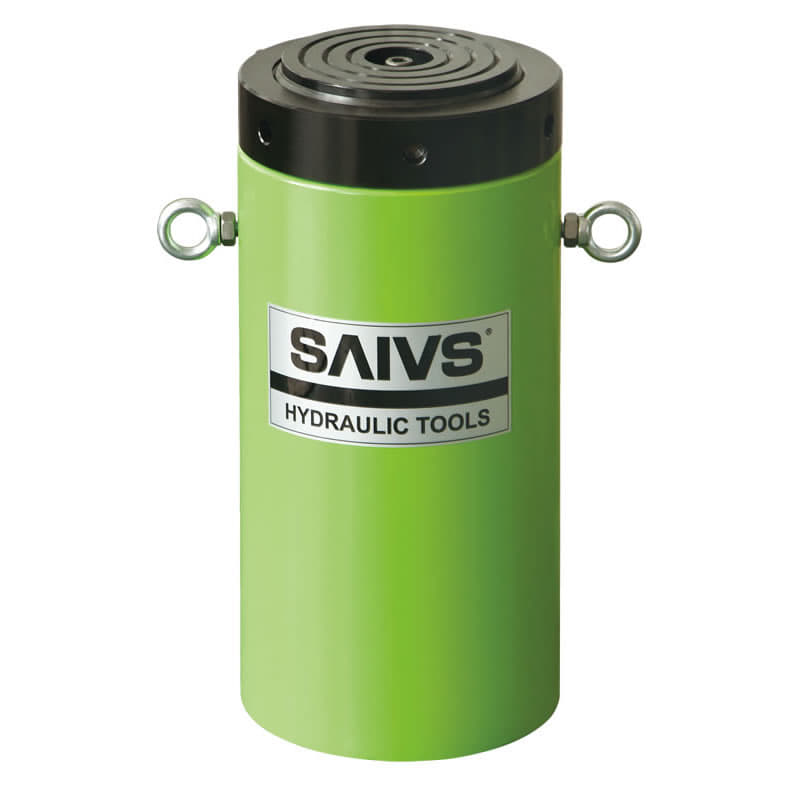Have you ever understood the classification and working principle of hydraulic cylinder jacks?
According to their Power Source, jacks can be divided into electric jacks, manual jacks, and electric-manual combination jacks. Manual jacks are simple to manufacture and low-priced, but their use requires constant hand-operated lifting and lowering of the sleeve or arm, making them time-consuming and inconvenient. Electric jacks improve work efficiency and eliminate the burden of physical labor, creating a convenient, efficient, and labor-saving environment and conditions for mechanics. Therefore, most users now prefer remote-controlled electric or electric-manual combination jacks.
Remote-controlled electric jacks can be operated remotely within a certain distance. The whole system consists of a motor, electric control device, infrared receiver, gearbox, screw drive clutch device, and machine base. The working principle is to control the motor on the jack with an infrared transmitter and receiver. The motor rotates and drives two stages of screw drive machinery to move up and down after reduction by an external meshing cylindrical gear, thus safely and quickly lifting the vehicle or object. Another type of remote-controlled jack has a different reduction device, consisting of a planetary reduction mechanism and an open reduction mechanism. The system includes a motor, reduction mechanism, lifting mechanism, wheel mechanism, and machine base. The remote control operation lifts the jack without the operator having to crawl under a car, which results in high automation, safety, reliability, and convenience.
Electric-manual combination jacks use a special shift fork device to switch between the electric and manual modes. The whole system consists of a motor, gearbox, up and down arm, positioning plate, and base. When electrically powered, the motor rotates and drives the screw to achieve the lifting and lowering process of the jack (which is achieved by the motor's forward and reverse rotation). When manually powered, the small gear is disengaged from the mesh, enabling easy switching between the electric and manual modes.
According to the different transmission types, jacks can be divided into mechanical transmission jacks and hydraulic transmission jacks. As a traditional mechanical jack, the screw jack is widely used for lifting, transportation, loading, unloading, installation, and some special process operations. It uses gear transmission to rotate the screw, driving the sleeve or arm to move up and down for lifting or pressing purposes. Its characteristically features a small lifting height but high lifting capacity. The conical gear screw jack, for example, breaks the traditional screw mechanism of using the nut to fix the screw. During operation, the handle or handwheel rotates and drives the nut to make a horizontal rotation, causing the screw to move up and down. Because the nut is vertically limited by the base, the handwheel or handle always rotates within the vertical plane and changes the center position of rotation with the screw's up and down movement, thereby ensuring system stability.
The direct transmission electric jack is also a mechanical transmission jack, consisting of a jack with a transmission screw, a motor equipped with a reduction gearbox, a bearing set on the transmission screw, and a power switch operated by the operator. Its feature is the addition of a torque release device between the electric motor and the jack, and their power output shafts are located on the same centerline. It can lift vehicles or objects stably, safely, and quickly, especially allowing women to use and operate it alone, making it an essential tool for repairing vehicles and a must-have item on the car.
hydraulic jacks use the liquid sealed in the cylinder as a medium to convert hydraulic energy into mechanical energy to lift heavy objects. They are simple in structure, small in size, lightweight, with high lifting force
Why Choose SAIVS™ as Your Supplier?
With 20 years of industry experience, SAIVS is a leading Chinese manufacturer of high-quality tools, offering competitive pricing and excellent customer service.We pride ourselves on exceptional quality control, extensive experience, and comprehensive after-sales service.
